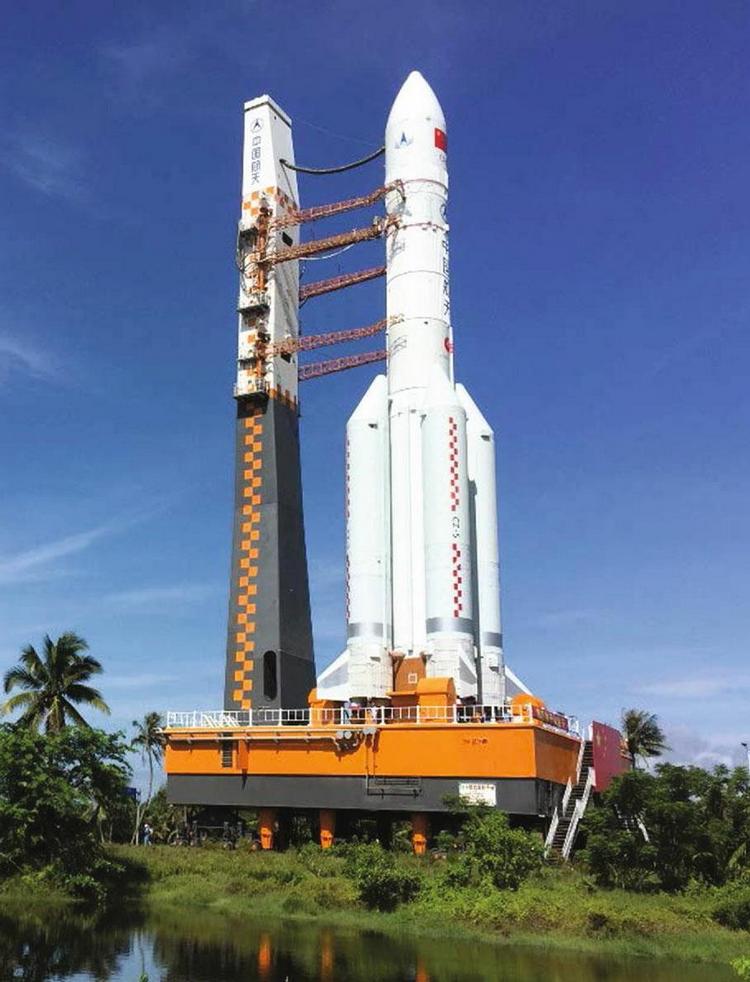More than 86 million Americans use the social media app TikTok to create, share, and view short videos, featuring everything from cute animals and influencer advice to comedy and dance performances.
Concerned experts point out that TikTok’s parent company, the Beijing-based ByteDance, has been accused of working with the Chinese government to censor content and could also collect sensitive data on users.
Pentagon leaks suggest China developing ways to attack satellites – here’s how they might work
Pentagon leaks suggest China developing ways to attack satellites – here’s how they might work
Pentagon leaks suggest China developing ways to attack satellites – here’s how they might work
The recent leak of Pentagon documents included the suggestion that China is developing sophisticated cyber attacks for the purpose of disrupting military communication satellites. While this is unconfirmed, it is certainly possible, as many sovereign nations and private companies have considered how to protect from signal interference.
Nearly every aspect of our lives is enabled by satellite communication, from financial transactions, navigation, weather prediction, and internet services to more remote locations. Yet given how many satellites are in orbit, while the effect might be felt on some of the population, if a satellite or two were lost there would not be any major problems.
But when we consider the military benefits of satellites, immediate communication is vital for early warning systems and tracking. So how easy would it be to disrupt these services?
The Chinese space programme has been advancing at a faster rate than that of any other country. China’s first successful launch was in 1970, but in 1999 its space programme leapt forward with the Shenzhou-1 launch which was the first in a series of unmanned, then manned, space missions of increasing sophistication.
China conducted just over 200 launches between 2010 and 2019. In 2022, it set a record with 53 rocket launches in a year – with an incredible 100% success rate.
As such, the Chinese National Space Administration (CNSA) has become a major player in global space activity and has a lot of experience with satellite communications. The leaked document suggests that the Chinese are looking for the capability to “seize control of a satellite, rendering it ineffective to support communications, weapons, or intelligence, surveillance, and reconnaissance systems”.
It’s also quite possible that the US and other nations might also be developing such capabilities.
Satellites orbit our planet at a range of altitudes. The lowest stable orbits are around 300km, the International Space Station and the Hubble Space Telescope sit at 500km altitude, and geostationary satellites are around 36,000km up (about six times the radius of the Earth).
The idea of physically capturing or taking over a satellite has been considered a largely impossible task, although it has featured, famously, in the film such as “You Only Live Twice” where a large orbiting cylinder swallowed manned spacecraft.
Smaller craft designed to remove space debris from orbit have been launched in the past few years. But the practical challenges of capturing a fully working and operating satellite are far greater (particularly due to the recoil of firing harpoons).
However, there are methods of disrupting and even taking over satellite communication?
Three ways to disrupt satellite communications
1. Saturation
This is the easiest method. Satellites communicate by broadcasting on a specific set of radio or microwave frequencies. By bombarding the receiving station or the satellite itself you can effectively drown out the signal. It is particularly effective with positioning information.
2. Jamming
This is a method of diverting the communication signal from reaching the satellite or the ground control station. This requires high-power signals to fool one or the other that the jamming signal is the main transmitting station as a communication will lock onto the strongest source.
This method of interference works best when the jamming signal contains no information, so the receiver assumes there is no data transmission (a human would hear silence or just a tone).

Xiaojun Wang, China Academy of Launch Vehicle Technology, CC BY 4.0 [https://creativecommons.org/licenses/by/4.0], via Wikimedia Commons
3. Command sending
This is an infinitely more tricky procedure. The original signal needs to be silenced or overpowered and the replacement signal must be able to accurately communicate and fool a satellite.
This usually requires knowing an encryption key that would be used as well as the correct commands and syntax. This sort of information cannot be easily guessed, meaning knowledge of the launch systems and companies is required.
To make these three techniques easier to understand, imagine you are at a restaurant and your partner is sitting opposite you. You are talking to them normally and then the background music gets turned up really loud. You may be able to make out some words but not everything – this would be saturation.
Now the waiter comes past and starts talking loudly at you taking your attention away – this would be jamming.
Now your partner goes to the toilet and you receive a call that appears to be from them but is actually from somebody who has taken their phone and is impersonating them – this would be command sending.
This final example is infinitely more difficult to achieve but has the most potential for disruption. If you can trick a satellite into thinking you are the true command source, then not only are communications blocked but false information and images can be sent to the ground stations.
Zombie satellites
When a satellite does go out of communication, we refer to it as a zombie satellite. Essentially it cannot do any of its intended tasks and just orbits with little chance of recovery.
This can happen naturally during coronal mass ejections, when the Sun releases large amounts of energetic charged particles that can interact with satellites causing electrical surges. In some cases this results in untrustworthy data, but can also result in communication loss.
The most famous of these cases was the Galaxy 15 telecommunications satellite, which lost ground station communication in 2010 but continued to broadcast communications to customers.
While the military cannot replicate coronal mass ejections, the hijacking of signals is possible. The leaked document does not provide any proof of China’s capabilities, or indeed the United States’ current advancement in this field.
All we can say is that our understanding of atmospheric physics and wave propagation in the upper atmosphere is likely to increase rapidly as this becomes more and more important.
Republished from The Conversation under a Creative Commons license in order to point Indo-Pacific warfighters and national security professionals to reputable and relevant war studies literature. Read the original article.

I completed my PhD in 2010 looking at the interaction of the Sun with the upper atmosphere of Venus. Since then I have held six postdoctoral contracts, covering medical imaging, solar physics, the Earth’s radiation belts, lightning in tropical cyclones, X-ray astronomy, and X-ray observations of the Earth’s magnetopause.
I currently teach at Nottingham Trent University, where I am responsible for astrophysics lectures, laboratory supervision, tutorials and student projects. I am very strongly interested in space science outreach, encouraging students and the public to take an interest in how our planet interacts with the solar system.
My additional research for student projects include off world living, and animal magnetosense.
Related Articles
Ransomware Attack Hits Marinette Marine Shipyard, Results in Short-Term Delay of Frigate, Freedom LCS Construction
The Wisconsin shipyard that builds the U.S. Navy’s Freedom-class Littoral Combat Ship and the Constellation-class guided-missile frigate suffered a ransomware attack last week that delayed production across the shipyard, USNI News has learned.
Fincantieri Marinette Marine experienced the attack in the early morning hours of April 12, when large chunks of data on the shipyard’s network servers were rendered unusable by an unknown professional group, two sources familiar with a Navy summary of the attack told USNI News on Thursday.
There’s no place for impunity in cyberspace
Two years ago, I had the opportunity to chair the first-ever official UN Security Council meeting on cybersecurity. Almost everyone there stressed that all states have already agreed that international law, including the UN charter in its entirety, applies in cyberspace. Only two countries did not. Half a year later, one of those countries, Russia, started its full-scale aggression against Ukraine and violated every rule in the book. For years, we heard predictions that the next big war would be a kind of cyber Armageddon. But instead, Russia brought back large-scale conventional war.



